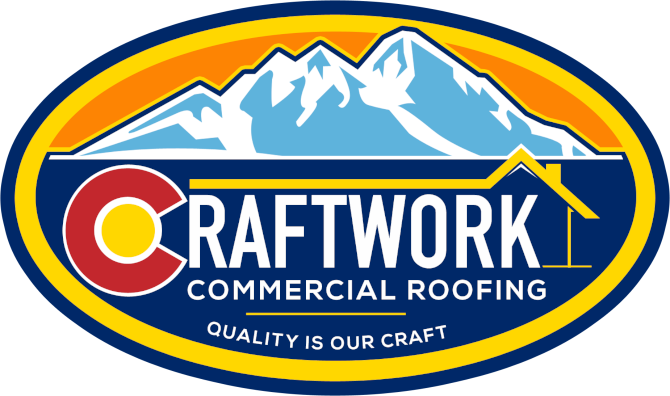PVC (Polyvinyl Chloride) Roofing
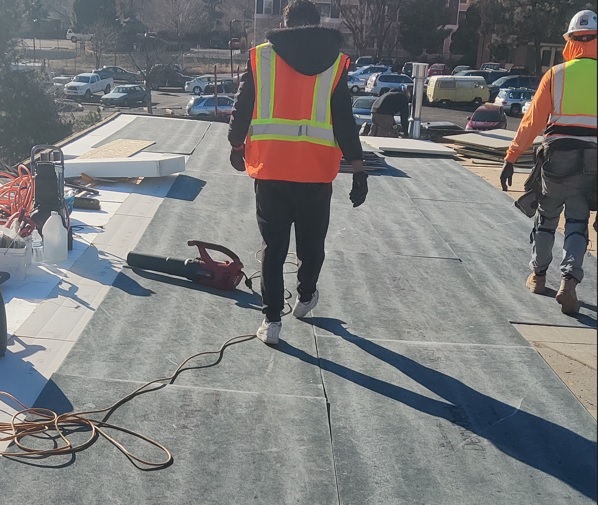
What is PVC Roofing?
PVC, which stands for polyvinyl chloride, has emerged as one of the premier roofing materials for flat and low-slope roofs on commercial and industrial buildings. This thermoplastic membrane offers incredible durability, weather resistance, and longevity – easily lasting 20 years or more with proper installation and maintenance. PVC is also highly energy efficient, reflecting solar radiation to reduce cooling costs. From an environmental standpoint, PVC is recyclable and has a low global warming potential.
maintenance & Durability
Perhaps most crucially for my commercial clients, PVC requires minimal maintenance, is resistant to chemical leaks and grease, and can even withstand heavy foot traffic and equipment loads. With Denver’s intense high altitude sunlight and temperature swings, PVC’s resistance to thermal shock makes it an ideal roofing solution for our harsh climate conditions. Simply put, PVC delivers outstanding long-term performance and value.
Advantages of PVC Roofing
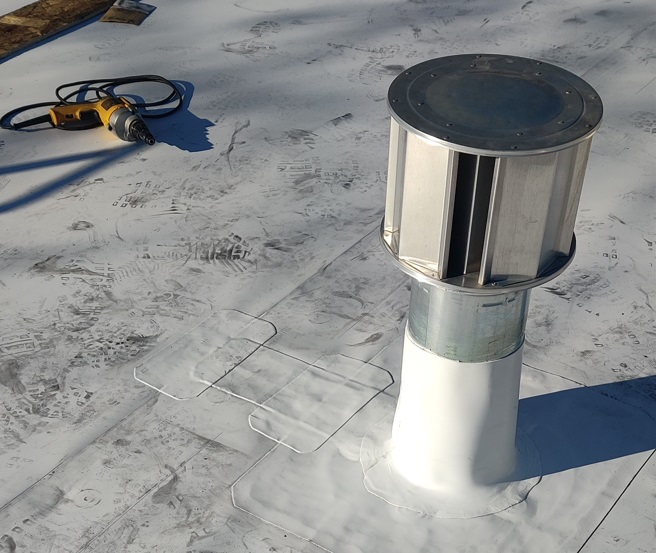
Durability and Longevity
One of the biggest advantages of PVC for my commercial roofing clients in Denver is its incredible durability and longevity. This thermoplastic membrane is highly resistant to weathering from Denver’s intense UV radiation, freeze-thaw cycles, hail, and windstorms. PVC doesn’t become brittle or crack like some other roofing materials. Its heat-welded seams also prevent leaks far better than traditional tar-based systems.
But what really sets PVC apart is its typical lifespan – these roofs routinely last 20-30 years when properly installed and maintained. Some PVC roofs have even exceeded 40 years of service life! Compare that to modified bitumen or built-up roofing that might only get you 12-15 years. With a PVC roof, my clients get a robust, sustainable solution that provides maximum value and protection for their commercial properties over a very long period of time. This superior durability and longevity makes the upfront investment in PVC extremely cost-effective in the long run.
Waterproofing
When it comes to waterproofing, PVC roofing simply can’t be beat. These thermoplastic membranes are truly watertight thanks to their hot air weldable seams that create a monolithic, impermeable surface. Unlike many other commercial roofing systems that rely on layers of fabric and asphalt that can deteriorate over time, PVC remains impervious to water penetration for decades. This superior waterproofing is especially crucial here in Denver where we can get heavy rainfall and accumulated moisture from snowmelt. Even in conditions of prolonged ponding water, PVC continues to perform exceptionally well by resisting moisture migration and leaks. Some roofing materials can actually be compromised by standing water, but PVC’s thermal plastic construction means it won’t absorb water, swell, dry out or become brittle. For my commercial clients, this waterproof integrity gives them confidence their roof will protect their buildings, equipment and operations from costly water damage year after year.
Cost-Effectiveness
While the upfront investment for PVC roofing is higher than some other systems, I always encourage my commercial clients to look at the big picture cost-effectiveness. Yes, the materials are more expensive upfront, but PVC pricing is very competitive with other premium roofing options. And those extra upfront costs are easily offset by the long-term savings PVC provides. With its exceptional durability and longevity, PVC requires very little maintenance and repair over its 20-30 year lifespan, unlike cheaper roofing that needs much more upkeep.
PVC’s heat-reflective properties also help maximize energy efficiency for cooling costs. But the real savings come from avoiding costly leaks, moisture damage, and premature roof replacements that eat into my clients’ operational budgets. A PVC roof easily pays for itself through lower life-cycle costs over decades of reliable protective performance. For a prudent long-term investment strategy, PVC delivers tremendous overall value for Denver’s commercial properties.
Energy Efficiency
Energy efficiency is another major selling point for PVC roofing. PVC membranes have exceptional reflective properties that help repel the intense high altitude sunlight we get. This ‘cool roof’ technology significantly reduces heat absorption and thermal transfer into the building below. By reflecting up to 85% of solar radiation, PVC roofs can lower air conditioning needs by as much as 25% compared to darker roofing materials. This translates into substantial energy cost savings over the long lifespan of the roof. Many of my clients have also been able to downsize their HVAC equipment requirements with a highly reflective PVC roof in place. On top of the energy savings, PVC’s UV resistance means the roofing membrane maintains its energy-efficient properties for decades without degradation. For commercial properties looking to maximize energy performance and long-term cost efficiency, PVC is an outstanding environmentally-friendly option.
Environmental Benefits
PVC roofing provides significant environmental advantages over other roofing materials. Throughout its entire life cycle, PVC has a relatively low environmental impact. Its manufacturing process is highly efficient with minimal waste. On the job site, PVC is an inert product that doesn’t release pollutants or toxins. And once installed, the roofing membrane is extremely durable and long-lasting, avoiding the need for frequent replacement and additional resource consumption.
Perhaps PVC’s biggest environmental asset is that it’s 100% recyclable at the end of its service life. Unlike asphalt-based roofs that get sent to landfills, PVC can be completely reprocessed into new vinyl products. Many of my clients here in Denver are thrilled to have a high-performance roofing option that helps reduce their carbon footprint and diverts waste from overflowing landfills. For businesses looking to ‘green’ their operations, PVC allows them to check off sustainability while still getting maximum value and protection.
Components and Properties of PVC Roofing
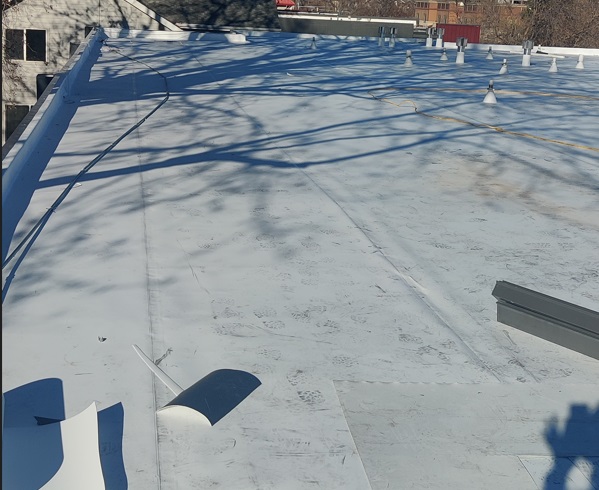
Material Composition
When you take a look under the hood, so to speak, the material composition of PVC roofing membranes is quite unique compared to traditional low-slope roofing systems. While PVC does contain plastic polymer resins and stabilizers like other single-ply membranes, it’s the addition of reinforcing compounds like fiberglass mats or polyester fabrics that gives PVC its exceptional strength and dimensional stability. This allows PVC to be manufactured into large, thick, mono-ply sheets that are far more durable than multi-ply modified bitumen or built-up roofing.
Unlike asphalt-based materials, PVC is unaffected by the freeze-thaw cycles and temperature swings we experience here in Denver. It also doesn’t become brittle with age or require harsh chemical applications for seaming like some other roofing does. The thermoplastic formulation allows PVC to be heat-welded into a seamless, watertight surface. This unique material composition translates into a roof that is tougher, more weatherproof and longer-lasting.
Physical Properties
The physical properties of PVC roofing make it an ideal choice for the demanding conditions that commercial rooftops face here in Denver. Despite being a thick, durable membrane, PVC remains remarkably flexible even at extremely low temperatures. This allows it to expand and contract with thermal swings without cracking or becoming brittle. At the same time, PVC’s reinforced construction gives it superior tensile strength to withstand heavy roof traffic, equipment loads, hail impacts and high winds that could tear or puncture other roofing.
PVC also stands up incredibly well to chemicals, greases, oils and environmental pollutants that could degrade lesser roofing materials over time. And in the event of a fire, PVC’s excellent thermal plastic composition provides crucial fire resistance by self-extinguishing and releasing less smoke and toxic gases. These robust physical properties mean their PVC roof will maintain its waterproof integrity and protective performance capabilities for decades, no matter what Mother Nature dishes out.
Installation Process
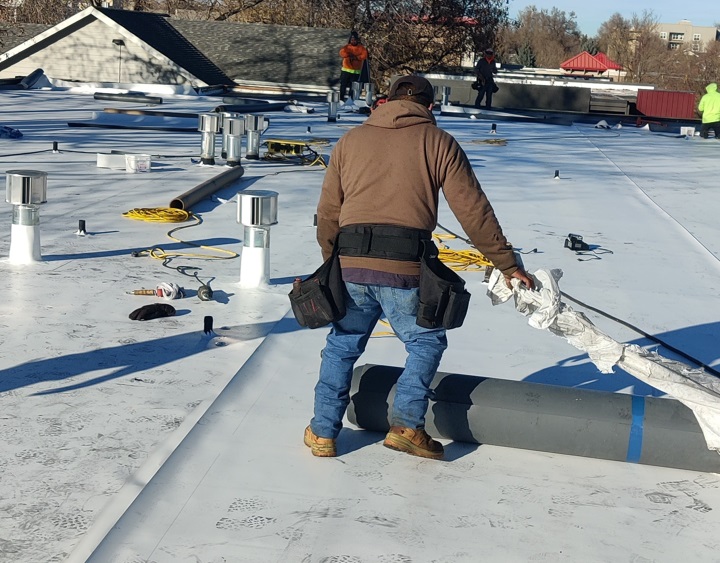
Preparation
Proper preparation is absolutely crucial for ensuring a successful, long-lasting PVC roof installation. That’s why my team starts every PVC project with a thorough inspection and assessment of the existing roof substrate. We carefully examine the entire surface for any defects, deterioration, or potential problem areas that need to be addressed before the new PVC membrane goes down. This often involves removing any gravel, debris or abandoned equipment that could cause punctures. We also repair any cracks, blisters or other minor damages in the existing roof using appropriate patching materials compatible with PVC.
Proper cleaning is also essential – any dirt, oils or other contaminants get removed to allow optimal adhesion of the PVC membrane. Taking these critical preparation steps may add some time upfront, but it’s a worthwhile investment. Ensuring the substrate is sound and ready for installation prevents future leak issues and maximizes the PVC system’s waterproofing performance over its full life expectancy.
Application Methods
When it comes to applying that durable PVC membrane, my team has three primary installation methods that we recommend based on the specific project requirements. For maximum wind uplift resistance, we often specify a fully adhered system where the PVC is bonded across the entire roof surface using a special adhesive. This ensures the roof stays firmly in place during our notorious Colorado wind events. For some new construction on nailable decks, we may utilize a mechanically attached system that secures the PVC using rows of heavy-duty fasteners and barbed plates along the perimeter and seams. Both options create a sturdy, watertight monolithic roof.
However, for re-roofing over an existing membrane or insulation, a ballasted PVC system can be very effective. Rather than adhering the membrane, we simply weigh it down using concrete pavers that allow for easy installation without disrupting the existing roof assembly. Regardless of attachment method, all PVC seams are hot air welded to create a continuous, impermeable surface. My team has expertise across all three techniques to ensure your new PVC roof is installed perfectly for maximum protection and longevity.
Timeframe
One question I often get from commercial clients is ‘how long will this PVC roof installation take?’ While every project is somewhat unique, I can provide a general timeframe. For a typical low-slope roof under 50,000 square feet with normal access, my crews can usually complete the installation of a fully-adhered or mechanically attached PVC system in 2-4 weeks from start to finish. A ballasted system may run a bit faster. However, several variables can impact the duration. Larger roof areas or complex designs with numerous penetrations and details will naturally take longer.
Preparing an existing roof surface that needs significant repairs can also add days to the schedule. Weather is always a factor too – excessive precipitation or freezing temperatures can delay the PVC installation process. That’s why I always advise my Denver clients to plan their PVC projects during our drier, warmer seasons if possible. Regardless of the timeline, my team is equipped to work efficiently while maintaining our high standards for quality craftsmanship on every PVC roof we install.
hPVC Roofing in Denver, Colorado
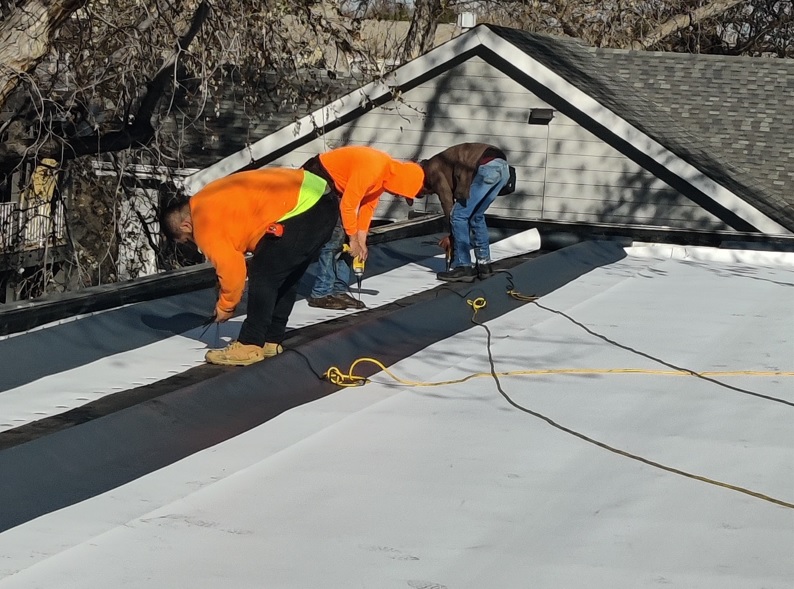
Climate Adaptability
PVC membranes can handle our region’s extreme temperature swings and wild weather patterns. Our winters can bring sub-zero temperatures, heavy snowfall, and frequent freeze-thaw cycles – conditions that can wreak havoc on lesser roofing materials. But PVC’s flexibility and thermal plasticity prevent it from becoming brittle or cracking when frozen. Then in summer, we deal with intense high-altitude sunlight and heat that causes premature deterioration of many roof systems. PVC’s reflective properties minimize heat absorption while its reinforced construction resists softening and UV degradation. Basically, PVC maintains its waterproofing integrity whether enduring -20°F wind chills or 100°F days on the roof. This exceptional cold and heat resistance is crucial for a roof’s longevity in Denver’s punishing climate. With a properly installed PVC roof, you don’t have to worry about the extremes – your rooftop investment is fully protected year-round.
Local Building Codes and Regulations
We ensure your new PVC roof meets all applicable local building codes and regulations. As an experienced Denver roofer, I’ve kept up with the latest requirements outlined in the city’s construction defects ordinance as well as the International Building Code standards that Colorado has adopted. My team is well-versed in specifying PVC roofing assemblies and installation methods that provide the mandated protections against water infiltration, fire spread, wind uplift, and structural loadings. We rigorously follow proper attachment, flashing, and sealing techniques per code. All PVC membranes and components we use also meet stringent performance criteria for weathering, accelerated aging, and other testing to comply with Denver’s building product regulations. From permit submittal to final inspection, we ensure your PVC roof project checks every box for full code compliance. This protects your building and investment while giving you peace of mind that the installation exceeds the city’s safety and durability requirements.
Environmental Factors
Being located at a mile-high elevation, Denver presents some unique environmental challenges that make PVC roofing an ideal solution for my commercial clients. Our high altitude means increased exposure to intense UV radiation from the sun which can degrade and age roofing materials prematurely. However, PVC’s construction with UV-resistant compounds allows it to maintain its integrity and reflective “cool roof” properties for decades without deterioration. This heat-reflective technology is especially valuable at elevation where we experience greater cooling loads and hot temperatures can really drive up energy costs. By minimizing heat absorption through the roof, reflective PVC membranes help reduce air conditioning demands by up to 25% compared to darker roofing. For building owners, this translates into significant long-term energy savings at our altitude. PVC’s exceptional UV resilience and energy efficiency allow it to perform optimally in Denver’s Mile High climate while protecting indoor comfort and operating costs.
